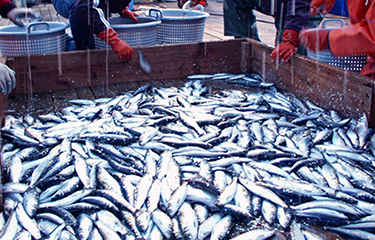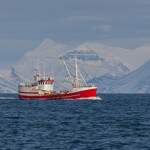Alaska roe herring season opens with limited interest from Japanese buyers

It’s a big year for Alaska roe herring fisheries – but lackluster interest by both harvesters and processors is an ongoing issue.
The fishery at Sitka Sound opened on 27 March after a stall last year and a limited fishery in 2019, resulting from small fish and a weak market. The seine fleet this year has a harvest of 33,304 metric tons (MT) - nearly 67 million pounds - but managers predict low participation and limited processing capacity.
Up to 15 boats started fishing 1 April at Kodiak for one of its biggest fisheries in decades at 7,895 MT (16 million pounds). Togiak, in Bristol Bay, is Alaska’s largest roe herring fishery this year with an 42,639-ton harvest, or more than 85 million pounds. Last year, only three boats and one buyer showed up there during the May fishery.
The herring market has tanked over two decades following declining interest in Japan, where tastes and buying policies have changed.
In the 1990s, Alaska fishermen fetched USD 1,000 (EUR 846) per ton or more, and while product from Sitka today might pay out at a few hundred dollars a ton, at Togiak, the price has been USD 50 to USD 75 (EUR 42 to EUR 63) for several years. Alaska’s herring catch in 2020 was so low that all data remain confidential so as not to give away trade secrets.
“It is maybe the most extreme example I’m aware of how a major Alaska industry could be dependent on an extremely specialized foreign market,” Gunnar Knapp, a retired University of Alaska fisheries economist, told KDLG in Dillingham.
Robert Heyano, who has fished at Togiak for more than four decades, said that “the industry needs to find other ways to sell its herring, such as bait or food.”
Waste is another issue. Herring is frozen and usually shipped to Japan, where the roe is extracted. The male fish have almost no value and are mostly turned into fishmeal, sold as bait, or ground up and dumped. That’s also the fate of the female carcasses after their roe is taken.
It’s estimated that only 12 percent of Pacific herring is used for human consumption. A report by the Alaska Seafood Marketing Institute claims that if the discarded herring was instead turned into fillets, it would increase the first wholesale value by USD 11 million (EUR 9.3 million) per year.
Alaska’s herring fisheries have been managed for sac roe since the 1970s, but today, the fish is far more valuable as bait. At Dutch Harbor, for example, bait herring pays out at over USD 500 (EUR 423) per ton; At Cook Inlet, it brings at least USD 1.00 (EUR 0.84) per pound for fishermen. Ironically, many Alaska fishermen purchase herring from the East Coast for use as bait.
Forrest Bowers, deputy director of Alaska's commercial fisheries division, agreed that it could be time for a change.
“Those are regulations that the [Alaska] Board of Fish could modify,” he said. “If a person said we want to increase this opportunity or provide an additional opportunity to obtain their own bait, that is something the board could take a look at. And if we are in areas where the harvestable surplus isn’t being taken in the sac roe fishery, why not allow it in a different fishery?”
Reporting by Laine Welch
Photo courtesy of NOAA






Share